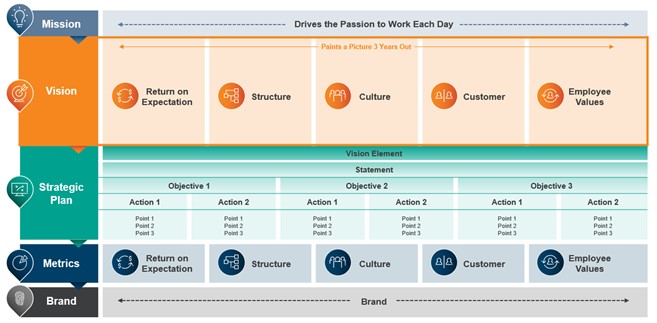In today’s rapidly evolving business world, the lines between technology and business have blurred. Organizations need to modernize and transform their technology in order to successfully compete. CIOs play a critical role in transforming the world of work using automation and technology – but they can’t do it alone. Collaboration among the C-suite is critical. In this blog series, Protiviti’s Technology Consulting leaders share insights on the key areas CIOs need to consider on the transformation journey and the impact across the C-suite and business.
Enterprise transformation demands technology to work and people to adopt it. The “people” component of enterprise transformation can make or break digital transformation. If people within the organization are given the right tools and are enabled and empowered to use them, they can achieve the desired intent of technology transformations. CIOs enable adoption by championing comprehensive change enablement programs that focus on people. When people receive the consideration they deserve, they are more apt to bring innovative ideas forward. Organizations that do not sufficiently budget for change enablement fail at enterprise transformation because people do not adopt the new technology. Instead, they revert to previous processes or find alternatives.
While strong ROI is compelling, so is the fact that people issues are one of the top enterprise risks. In 2020, the SEC introduced, and the International Organization for Standardization supported, the first regulatory standard (ISO 30414) that prescribes employee experience as a part of enterprise value. ISO 30414 reflects the enterprise risks of neglecting the people aspect of corporate activities, and it shines a light on the contributions of an organization’s human capital.
How do organizations begin addressing people issues as part of enterprise transformation? To avoid failure by underestimating the people component, change enablement should start at the very beginning – at project identification. Stakeholders must be in initial conversations about technology transformation. They bring value as they offer viewpoints on impact to job functions, which opens a dialogue on guided support and remediation.

To bring the benefits of enterprise transformation, organizations that want strong change enablement must establish a shared-risk, shared-gain approach, and should:
- Commit to change from the C-suite level down
- Establish a North Star, which is the key measurement of success in an organization
- Align strategy with vision
- Create a transformation management office at the outset
Start with a Commitment for Change at the Top
If there is a pinnacle to change enablement, it is having an executive leadership team that is committed to the transformation at the outset. The words and actions of the CEO and C-suite members must continuously resonate a commitment to transformation. Sharing progress toward achieving KPIs and metrics reinforces commitment. The organization’s human capital must be made to feel that they are significant players in the rewards and risks of transformation. CEOs who constantly communicate about the difference that people make and their impact on brand or the customer experience move the needle towards adoption and increased ROI.
Creating opportunities to talk about the digital transformation, and frequently, is a must. Executives must constantly reinforce their commitment to the transformation through town hall meetings and frequent interoffice communications that illustrate metrics to prove progress and impact.
Establish a North Star
To enable change, organizations must have a very strong vision — a mind’s eye picture of their desired future state, what the change will accomplish and how it impacts the organization. Having a vision is the North Star that informs direction. The key elements of vision that companies should work toward include:
- Return on expectation – Includes a focus on financial transformation, metrics and results of the desired state, based on investment and impact to the business
- Structure – Encompasses the operational transformation structure and the organization’s aspirations for a future state
- Culture – Identifies people’s initial perceptions of an organization
- Customer – Defines the customer experience and why customers choose to do business with the organization
- Employee values – Highlights organizational value and the human capital management required for the strongest employee experience
Without a defined vision, there is lack of human adoption.
Align Strategy with Vision
It is essential to ensure that the organization’s strategic objectives align with its vision. Strategic objectives enable vison to become actionable so results can be achieved. Strategic objectives must permeate to front-line employees and stakeholders. Analyzing metrics and KPIs along the transformation journey helps guide decision-making towards the stated strategy. When the cascade of vision, strategic objectives and metrics align, organizations are well-positioned for optimized ROI.
A dashboard of KPIs and metrics to demonstrate progress and people’s efforts in making a difference supports vision. Dashboards can offer transparency. They are tangible tools that demonstrate and track progress, guiding the transformation toward buy-in and success. Dashboards can be leveraged to explain the reasons for detours or modifications to the transformation journey, bringing understanding so people remain committed to the transformation.
Create a Transformation Management Office at the Outset
Setting up a transformation management office helps align the people aspect of the transformation in step with the other elements of change. Implementing change enablement at the very beginning of a transformation is essential. Introducing change enablement late in the journey, such as during implementation, causes people to disengage and not feel a sense of ownership. As a result, implementation often fails, budget overruns impact ROI and the benefits of transformation are diminished. Comprehensive transformation processes should focus on activities and deliverables that:
- Identify and align
- Document and map
- Design and develop
- Implement and adopt
- Facilitate feedback and improvement
The transformation office consists of a change enablement team with roles to ensure the most impactful implementation possible. Ownership and responsibilities are defined with team members working in unison from a single plan for the highest level of engagement, ownership and adoption of the change. Roles in the transformation office may include change lead, change agent, change champion team member, training coordinator, training developer, communication coordinator and communication developer.
The Collaborative Role of the C-Suite
CIOs must have a direct seat at the C-suite decision table, rather than indirectly reporting through another executive. Establishing a collaboration framework that supports strategy and fosters knowledge sharing is optimal. CIOs must pay particular attention to going beyond technology by focusing on the business aspect of change enablement. They must speak the language of the business by focusing on the “why” of change and tying it to the business need.
The C-suite and other leaders must be role models of change, and C-suite members must be aligned with the CEO. People are watching and absorbing even if they are not vocalizing their thoughts. The C-suite should watch for signs of disengagement and adjust accordingly to maintain people’s interest and ensure they feel seen and heard.
To boost buy-in, leaders should demonstrate resilience, energy, support, patience, ethics, courage and trust. Leaders and change-enablers must be approachable to receive feedback. Executive leaders must attain individual buy-in to attain adoption by staying focused on the individual and using a shared-reward, shared-risk approach. Executives must also ensure that their communications are consistent with their actions and that it all ties back to strategic objectives, vision and corporate values.
What Should Companies Do Now?
Implementing change enablement with adequate funding at the start of enterprise transformation is essential. It allows for increased human capital buy-in and heightened ROI. As importantly, aligning activities and deliverables with the organization’s vision, strategic objectives and metrics positions companies for successful enterprise transformation. To move forward, organizations must know where they have been. For that reason, organizations should evaluate past change initiatives to assess past “people” approaches and make adjustments accordingly.
Next up in our Technology Modernization and Transformation series, we’ll discuss key considerations for the CIO on how to implement cybersecurity with a holistic approach. Stay tuned!






